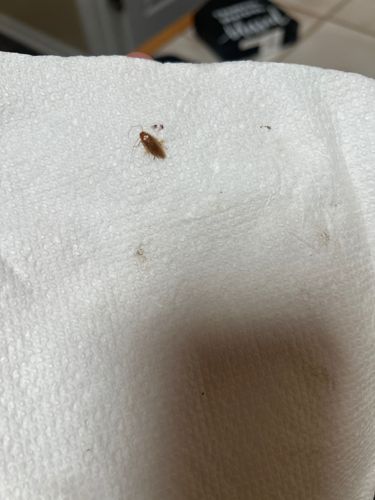German Cockroach
Scientific Name: Blattella germanica
Order & Family: Blattodea, Ectobiidae
Size: 1.1 to 1.6 cm (0.43 to 0.63 inches)

Natural Habitat
Primarily indoor environments, preferring warm, humid places like kitchens, bathrooms, and basements. They can be found in cracks, crevices, behind appliances, and inside walls.
Diet & Feeding
Opportunistic omnivores, feeding on virtually anything found in a human dwelling, including food scraps, grease, pet food, soap, glue, and even toothpaste.
Behavior Patterns
Nocturnal and highly adaptable. They are rapid breeders, with females producing multiple egg cases (oothecae) in their lifetime. They are known for their rapid dispersal and ability to infest new areas quickly. They often carry diseases due to their habits of crawling over decaying matter and food sources.
Risks & Benefits
Potential risks include spreading pathogens (bacteria, viruses, fungi, parasitic worms) that can cause food poisoning, dysentery, allergies, and asthma. They can contaminate food and surfaces. There are no notable benefits to humans; in ecosystems, they can be a food source for other animals but are primarily considered pests due to their association with human environments.
Identified on: 9/7/2025